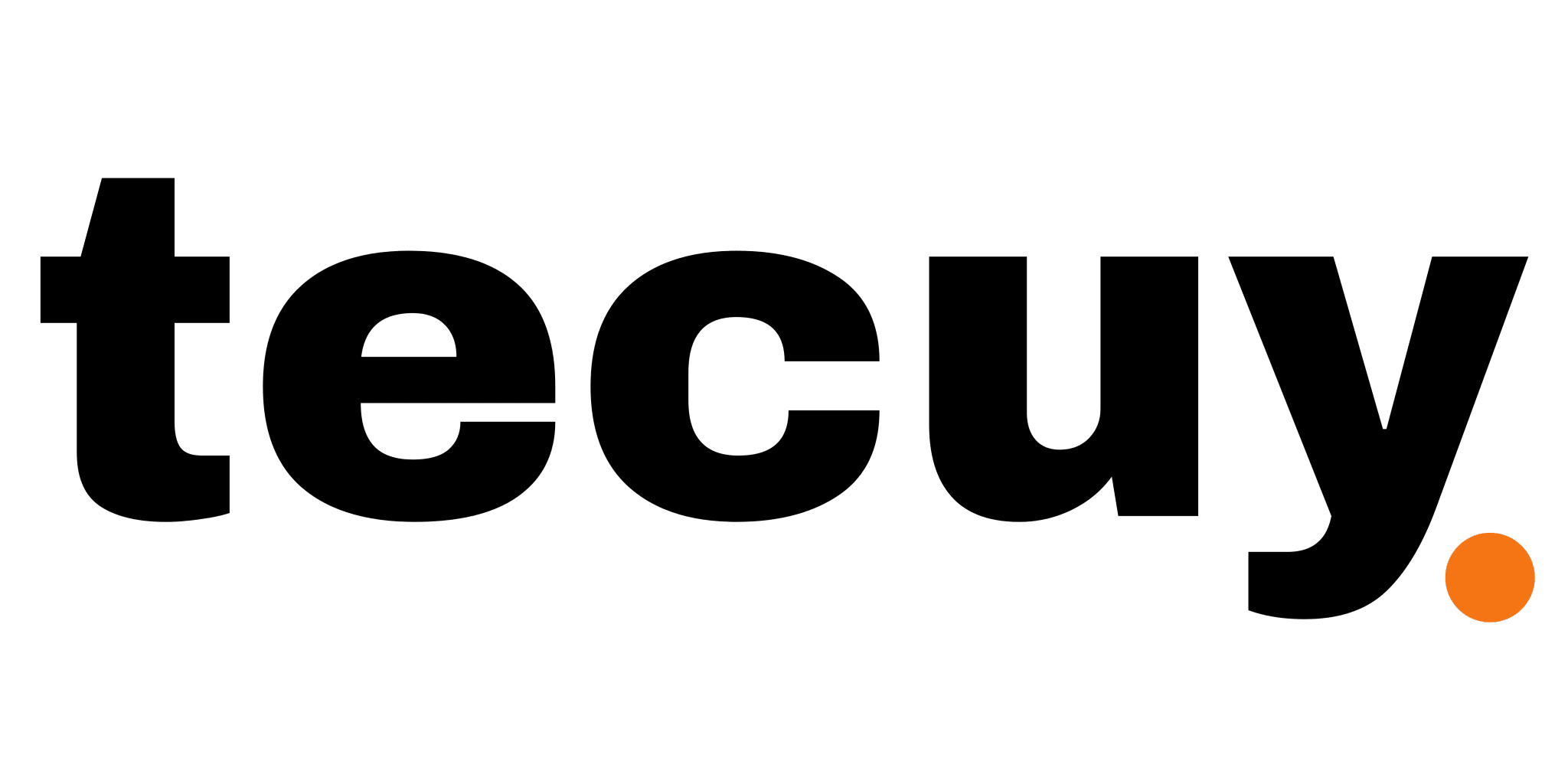4 TED Talks That Show How Blockchain Is Changing Business
1. How The Blockchain Is Changing Money And Business
If you are looking for a brief introduction to cryptocurrencies and blockchain, this one video is the first and last stop. This talk explains distributed ledger technology, working, and opportunities to revolutionise finances and business.
The speaker in this talk, Don Tapscott is the Executive Chairman of the Blockchain Research Institute. Tapscott has written 16 books on the impact of innovation and new technologies on society and businesses. He is a Senior Advisor at the World Economic Forum and an Associate of the Berkman Klein Center for Internet at Harvard University.
Tapscott explained all the basic questions on blockchain in an easy-to-understand manner. He answered, “What is blockchain?”, “How blockchain works?” and “What is Bitcoin?” in a less than 20 minutes video. He explained how blockchain will simplify the current messy financial service industry and turn inefficient and complex systems into transparent and immutable systems saving operational costs in millions of dollars.
Tapscott points out the potential of blockchain technology of making the world more prosperous by creating a true sharing economy, immutable ledgers with transparency, and giving the citizen control over data instead of a few entities like companies and government.
2. Future of Blockchain
Chelsea Rustrum brings out a different perspective on the implementation of the blockchain. The author of “It’s a Shareable Life” explains how blockchain technology can bring positive change to businesses in an 8-minute video. She explained how Airbnb has overtaken Hilton in just 5 years, are Uber drivers getting fair rewards, and whether they are vehicle owners.
In her opinion, all these companies are creating value on the ownership of the other without any commensurate reward. These ‘sharing economy’ companies are not sharing anything.
He then went on to explain how blockchain technology could create a true sharing economy, a unique and effective solution for sharing ownership rights and distributing value.
Also Read – Top 6 Tech Trends in 2023 You Should Be Thinking About
3. How The Blockchain Will Radically Transform The Economy
The above talk was just the tip of the iceberg. This TED talk by Bettina Warburg is important for anyone who wants to delve deeper into how blockchain has the potential to improve the economy. Bettina Warburg is a blockchain researcher, educator, and entrepreneur. She explained how blockchain technology will take centralised institutions like banks and governments out of the equation.
Warburg explains how blockchain can play a key role in reducing loopholes by enabling transparency, and better asset tracing.
4. How Cryptocurrency Can Help Start-Ups Get Investment Capital
I bet you haven’t even heard the term ICO till now. Initial Coin Offerings are an alternative way for startups to raise capital. If this is not your first attempt to learn about blockchain and cryptocurrencies, there is a high chance that you have not heard about ICOs yet.
Ashwini Amburajan, a tech entrepreneur, talks about how startups are raising capital in cryptocurrencies, why this bold step is being taken, and the impact of democratising investing.
Top 6 Tech Trends in 2025 You Should Be Thinking About
We are the generation that has witnessed a revolution in the field of technology. From analog computers to artificial intelligence, we have seen technology developing at a rapid pace all around us. The knowledge we gained over time and improvements in material science led to rapid changes in technology, opening up new fields and new uses.
The COVID-19 outbreak forces IT professionals to develop new forms of workspace and interaction. With advances in natural language processing and machine learning, AI will become more prevalent in 2025. 5G will enable ultrafast connectivity and AI will be capable of handling complex tasks. The combination of both techs will revolutionise our way of living in the future. The rapid change in tech also requires learning new skills to secure jobs in the future.
Let’s have a Glimpse into some of The Tech Trends
1. Artificial Intelligence

Artificial Intelligence has already made an intrusion into our lives. In the ongoing decade, we will see AI working for us everywhere, making our lives easier by handling complex tasks that used to take a lot of brainstorming and time. We are already using AI in the form of voice assistants, image and speech recognition, navigation, and in many apps.
AI can better understand and analyse patterns in certain tasks. One example is preloading apps on our smartphones according to our usage patterns. A similar usage can benefit managing inventory in warehouses, hospitals, and many other places.
The AI market is reaching a $57 billion valuation and will touch the $190 billion mark by 2026. As the use of AI is increasing, new jobs in programming, development, testing, maintenance, and support will be created. AI also offers one of the highest-paid jobs in the world. Some Jobs in AI are AI research scientist, AI architect, and AI engineer.
2. Smart Devices

With the rise of AI, several new uses of devices emerged. One of them is smart devices. AI made our lives smooth, smart, simple, and hassle-free. AI-enabled appliances, wearables, and work devices have made a big impact on our lives. The market for smart devices is gonna grow and will bring jobs with him. The rapid growth in every field in the IT industry nowadays requires good proficiency in IT and automation. As a result, the demand for Data Scientists and Automation Engineers is also increasing. Some jobs in this field are IT manager, product tester, product manager, and automation engineer.
3. Extended reality

Extended reality is a mixture of virtual reality and augmented reality with real reality. This technology is in high demand among medical experts, gamers, modelling, and retail.
Overall, gaming is a popular and important sector to enter. It does not require high-level qualifications. Basic knowledge and passion for gaming are enough to build a successful career. Some jobs in the field of AR and VR are extended reality architect, software developer, game designer, and creative director.
4. 3D Printing

In previous decades, making prototypes was difficult and expensive. One miscalculation and everything goes for naught. Advances in simulation and 3D printing have made prototype formulation easier and cheaper. In the 80s people could never imagine printing real objects but nowadays it is a reality.
3D printing is also very useful in the biomedical field. The increase in the use of this technology in the healthcare and industrial sectors requires a lot of printing and thus knowledge. Various jobs like CX program manager, operations manager, and 3D printer engineer in this sector pay a good amount.
5. 5G

3G was a good jump but 4G was a leap in communication technology. 4G enabled the use of high-speed browsing, streaming, and data-driven services. 4G changed the way we use the internet while 5G is said to have revolutionised our lives. Cloud-based services will become more common such as NVidia GeForce Now, Google Stadia, and more. 5G will also aid in the healthcare segment. HD camera connectivity over 5G will transfer footage in real time with ultra-low latency, thereby improving traffic and security management. Our imagination is the limit to the uses of 5G. Therefore, there will be a need for engineers and developers to manage the technology.
6. Internet of Things (IoT)

The Internet of Things is another interesting and promising technology on the rise. Devices nowadays come with built-in WiFi connectivity and can connect and transfer data over the internet. Many devices in our homes can now be controlled by our smartphones. We can start our car and turn on the AC before leaving home, preheat the oven on our way home from work, lock the doors if we forget to do so, and much more.
There will be over 50 billion IoT-enabled devices around us. 5G will also play a major role in growth, with spending on these devices estimated at $1.1 trillion.
The field of IoT requires knowledge of AI, machine learning, informational security, automation, designing, hardware interfacing, and data analytics.
Other tech trends which are on the rise are computing power, datafication, digital trust, genomics, new energy solutions, robotics, cyber security, blockchain, edge and quantum computing, metaverse, and web3.
How Important is Cybersecurity for Small Businesses?
When we think about a hack, we think about large conglomerates with thousands of employees and global consumer bases. But that is just a way of thinking that has a very little link with reality. Small and mid-size businesses are at no less risk of being hacked or attacked than large conglomerates. In this post, we will discuss why small businesses need cybersecurity, and what they can do to build secure practices. We will also share some cybersecurity best practices for small businesses.
What is cybersecurity?
You probably have a pretty good idea about cybersecurity but we will quickly brush up your knowledge and shed light on certain aspects of cybersecurity that are not so heavily talked about.
Cybersecurity is the combination of offensive and defensive measures put in place in order to thwart attackers who might try to gain unauthorized access to or steal data from computer systems. Simply put, cybersecurity is the countermeasure to cyberattacks.
What is a cyberattack?
Anyone who has seen a single episode of Mr. Robot has a pretty good idea of what a cyberattack is. It is when a hacker uses malicious code to attack a system with the goal to gain access to it or steal from it. We come across a wide range of cyberattacks starting from brute-force attacks to bypass passwords, denial of service attacks, distributed denial of service attacks (DDoS), injection attacks, ransomware infections, and whatnot.
Also read – CRM Software, Monday – Features, Pros, and Cons
Why are small businesses at risk?
If we just follow the process used by hackers we’ll understand why small businesses are at risk. While a very small portion of attackers work with layered purposes and target specific companies with tailor-made strategies, most hackers use a form of mass attack where they can launch an attack on any website or application that appears on their radars. It’s pretty much like fishing with a net where you cast the net and just hope to catch a whole bunch of fish. In that situation, it doesn’t matter whether you run a small or a large business, the risk is on.
How does a mass attack take place?
It’s rather simple actually. The attackers deploy automated vulnerability scanners which probe into hundreds of websites looking for a certain type of vulnerability be it a little misconfiguration or a major gap in the input validation process. Once the vulnerable websites are spotted, the hacker can use specific strategies to launch an attack and cause harm to the business.

How can a cyberattack disrupt a small business?
We can understand this by talking about a few specific kinds of attacks. Let’s start with a DDoS attack. DDoS stands for distributed denial of service where the attacker uses an army of malicious bots to send traffic to your server, so much so that the server overflows and the intended users cannot use the website. A DDoS attack can last for hours, days, or weeks depending on how prepared you are to counter the attack or how keen you are to meet the attackers’ demands.
The next case would be that of a data breach where the attackers find a way to access sensitive data stored in your database. They can steal, delete, corrupt, encrypt, or sell this data. There can be login information, passwords, credit card details, and other forms of personally identifiable information.
Also read – 5 Marketing Strategies for Faster Growth of Your Business
The effect of cyberattacks
Now, the question is what happens to a small business that falls prey to such an attack?
- Google blacklists you and warns people against opening your website. You can’t think of a worse way of losing your reputation.
- Your hard-earned customers fail to use your website and take their business elsewhere.
- In the event of a data breach, you can be severely penalized.
- You may have to spend a spectacular amount of money on ransomware to save your site.
Studies show that 60% of small and mid-size businesses that suffer a major cyberattack or data breach do not survive.
5 cybersecurity best practices for small business
- It’s important to raise awareness among employees about cybersecurity.
- Regular vulnerability assessments are recommended to ensure there are no vulnerabilities hidden in your systems.
- You can opt for third-party security services to have your attack surfaces under vigilance.
- Promote safe coding practices to reduce the possibilities of a hack.
- Ensure compliance with relevant security standards.
5 Marketing Strategies for Faster Growth of Your Business
Marketing is changing. The channels through which you establish your brand have evolved. A modern business requires modern marketing strategies that are driven by data as opposed to instinct. In this post, we have curated some of the most paradigm-changing marketing strategies advocated by the best marketers from around the world. We will also give you the numbers that attest to the effectiveness of these strategies. So, read on, and happy marketing.
Setting a goal and a budget
That sounds awfully obvious, right? Of course, you would have some goals and an idea of the cost achieving those goals might incur. You would be surprised to know how many marketing teams around the world actually move forward without a long-term KPI-based goal.
A study reveals that marketers who set a specific goal for their campaigns have 429% higher chances of success than those who do not.
How can you determine marketing success and whether you are moving towards your goal?
- Identify KPIs like qualified leads, traffic, and revenue and measure them.
- Set a budget that is realistic for you. Ideally, it should be 7-8% of your business’ revenue.
- Build a process and improve it periodically based on the KPIs.
Influence marketing
Influencer marketing has yielded the highest ROI, more than 500% in recent times. It makes a lot of sense to connect with an already-established influencer to promote your brand. Another effective and even cheaper way of achieving this is to back an employee or a few of them to spend time on building influence on various channels and leverage their growth to market your brand. This is quickly becoming one of the most effective marketing strategies, especially for smaller businesses.
Also read – 7 Startup Ideas That Could Actually Work in 2023
Focused social media marketing
It is hard to resist the temptation of building enormous followerships in multiple social media channels, but it is even harder to actually manage to do that and realize the potential of each channel. The point is, it is a good idea to identify the channels where your target audience is actually located. Based on your business and the kind of audiences you are trying to reach, the channels you should focus on keep changing. If you are, for example, a marketing consultant, your audience is probably sitting on LinkedIn, so it would make little sense for you to focus a lot of energy on Facebook. Similarly, if you are trying to sell, say customized jewelry, Instagram may be your jam. It is vital that you identify the right channel and laser-focus your attention on it.
In this case, too, you need to keep measuring certain KPIs and modify your strategy based on the observed changes.

Do not forget email marketing
With so much focus on influencer and social media marketing, it seems a lot of people have sort of abandoned good old email. But if you talk to pro marketers, 59% of them will tell you that email is still the most effective channel.
How can you leverage the email medium for your business?
You can target two types of customers with email. One, new potential customers through cold emails and the existing customers with engaging content.
You can create useful content that is relevant to your user and deliver it to them as newsletters, just to keep them engaged and in the loop with your business.
As far as new leads go, get an email list, and create a banner that asks people for their email ID in exchange for some useful content. Use all of it to create a solid brand image.
You have to be careful with email drips so as not to overdo it. It’s important to keep a significant gap between two bouts of communication and every time you send a mail to someone make sure it means something to the recipient.
Also read – Marketing Automation Bizleads Summit: Some Key Takeaways
Blogs + Vlogs
Your blog posts create great value in terms of helping you climb up the search engine results page (SERP). However, it is very easy to fall prey to the idea of putting quantity above quality. While you want to please the search engine crawlers, you also want to engage your audience. After all, if your audience bounces right off your blog, it can’t be good for your ranks nor for your brand.
Find your niche, write long-form, truly informative articles, and throw the odd video in and see what happens. The audio-visual mode of interaction is becoming more and more relevant, so it’s better to dig into that.
Bottomline
More than anything else, your marketing strategy should be flexible. It should not be rigid to the point where you can’t evolve even after hitting a dead end. Other than that, create content with the spirit of teaching and not selling, be generous about the knowledge you share, and engage your customers with meaningful communication.
CRM Software, Monday – Features, Pros, and Cons
CRM stands for Customer Relationship Management. It refers to the processes as well as the technologies used to manage your relationship and interactions with customers and potential customers. Companies usually employ a CRM platform to manage the activities and data related to customer relationships. We will talk about such a platform, Monday or monday.com, in this post.
What is Monday?
Monday is essentially a project management tool that has recently launched a CRM for salespeople. It combines the features of a product management tool with those of a CRM to create a platform that can be equally useful for salespeople, marketers, and project managers. Nevertheless, the CRM template of Monday is specifically designed to aid sales teams.
What are some key features of CRM software Monday?
Monday doesn’t go too overboard with features, it has stuck with the usual features that you find in CRM software. Additionally, it has some integration opportunities that allow sales teams to communicate better within the company. Here are some features that might come in handy.
Through and Through Customization
Monday gives salespeople a CRM template that they can mold according to their convenience and habituated processes. It lets you color code the leads, mark their stage, and update their positions based on the progress made. The dashboards are customizable too. You can color code everything and it looks and feels great.
Also Read – What is a Startup? The Journey, Success & Failure
Automated alerts
One of the key aspects of customer relationship management is keeping track of customer engagement. Monday allows you to automate that. It sends an alert whenever a customer responds to an email and after that only with a couple of clicks can you update their contact status. The tool is loaded with several other automation.
Centralized management
Monday is designed in a way that you do not have to toggle through multiple dashboards to find specific information about a lead or a contact. For instance, you can visit the account-related information of a corresponding contact on the contact page itself. At any given point, you can access the account-related, contact-related, and deal-related information with a single glance.
Collaboration
This is an area where Monday has done a really good job. If your sales team communicates through multiple channels it is important to keep track of the communications and ensure that nothing important is lost. Monday enables integrations through which it is possible to centralize communications and enhance collaboration between teammates and across teams.

Data Analytics
Data should dictate the activities of sales teams more than instincts or personal preferences. Sales teams make better decisions when they have data on the completed deals and the ones in the pipeline. Monday shows forecasted values and numerous KPIs that help you judge the leads better. This easy access to analytical information definitely makes the job easier for a salesperson.
Also Read – Marketing Automation Bizleads Summit: Some Key Takeaways
Ease of use and setup
Monday is easy to set up and even easier to use. As we have already discussed, the CRM is thoroughly customizable. It features a drag-and-drop interface that makes it super easy to navigate through various modules and toggle through pages, visualizations, and analytical data.
You can optimize the columns and groups according to your own preferences.
Key Pros at a glance
- Deploy custom forms to capture lead data
- Visualize a lead’s journey with 8+ unique views
- Use custom dashboards to qualify, analyze, and track leads
- Keep information central and accessible across teams
Cons at a glance
- Monday requires a lot of manual inputs to work well as a CRM
- It is more of a project management tool with some CRM features
- Data quality is not protected throughout the sales journey
- More suited for multi-purpose use, not purpose-built for CRM or sales for that matter.
Conclusion
If you are looking for a tool that can be used across teams for marketing and sales and something that packs features of both project management and customer relationship management, Monday CRM software could be a good pick. It is not very expensive and comes with a no-strings-attached trial for two weeks. It is something you can definitely try. But if you are habituated to a more purpose-built CRM like Salesforce or Nutshell, the transition to Monday may seem a bit odd.
7 Startup Ideas That Could Actually Work in 2023
Starting up a business has a lot of mental barriers attached to it along with financial barriers. The most important component of a startup is the idea behind it – a startup idea that has the potential to bring about a revolution or at least create something that caters to a previously unfulfilled need. Entrepreneurship is hard but it can be extremely rewarding if done right. The important thing is to brainstorm ideas and be excited about them. Your startup idea has to come from you and we are here just to lend you a few thoughts, help you with a bit of market research, and point at some stones that are yet to be turned.
1. Help out parents to engage their kids in a meaningful way
Children are exposed to the blue light of smartphones and tablets at a very early age, and there is seemingly no way around it so why not utilize it for something constructive? Can you come up with educational content for children that is equally entertaining and engaging – it can be something like clicking the image of an animal to hear about it through audio-visual content. We’re obviously thinking out loud and encourage you to do the same because parents do want something that engages their children in a meaningful and exciting way.
2. How about a meal prep service?
That’s hardly a new thing, you would say. It doesn’t have to be a new concept as long as it targets a fresh consumer base who are willing to try a change. Myspace and Orkut were already there when Facebook came about – didn’t stop them from becoming the largest social media network. Maybe you can focus on a specific diet category, and mix things up a little bit. 217 million US citizens will depend on online food delivery by 2026, targeting that market does seem like a smart move.
Also read – What is a Startup? The Journey, Success & Failure
3. Have you thought about a drop-shipping business?
E-commerce businesses are burgeoning to the point of saturation and a lot of smaller players struggle to manage storage and delivery – even some larger players depend on localized drop-shipping services to reach certain areas. This is definitely an area that you can consider. If you can offer drop-shipping services at a lower cost you might actually land some interesting opportunities.
4. A localized grocery and meat delivery service could work
Apparently, the grocery delivery market is pretty crowded but a lot of people still find it hard to get a slot, especially for last-minute needs. You can be the local go-to person when it comes to delivering groceries and meats – take orders the night before, buy them fresh in bulk for a price lower than the market price, and deliver them for a little over market price. The profits will turn up as your consumer base grows.

5. Custom clothing for all ages
Customized clothing is not an alien idea but somehow the target market is limited to a certain age group. You hardly see 55-year-olds sporting customized clothes. That’s something you can poke your nose into. See if you can come up with some clothing ideas that would appeal to multiple age groups, you may even categorize them. Get friends and family to model for you, get some pictures out there and see where it leads.
Also read – Top 7 Hospital Management Software for 2023
6. Have you considered a ghost-writing firm?
Gather a couple of your friends who are good with words and can spend a few hours a day, to begin with. Look for ghostwriting projects for SEO and organic branding. You will find some as it is a burgeoning market. Write some by yourself, and assign some to your associates. Once you have secured some clients, start hiring people and pay them a little less than what you are being paid. You can see where we’re going with this, right?
7. Make eco-friendly cosmetics
The beauty and personal products market is poised to reach $128.7 billion by 2030. Trying to get a piece of it is fair. Creating products with natural ingredients and promoting them can work for you. You can even make videos that cover your manufacturing process. That sort of transparency can really build you a fan following and you don’t have to worry about branding separately.
Startups fail. The key to success is persistence until you succeed. Put all your heart and soul into an idea that you really believe in. The worst that could happen is, you will learn how to do it wrong.
What is a Startup? The Journey, Success & Failure
A startup is defined by innovation. It’s a company guided by the spirit of building or doing something new or developing on an already existing idea by giving it a new direction.
A startup is born from a gap in the already existing systems. When an entrepreneur identifies a need in the market that hasn’t already been met by product or can come up with an idea that will likely modify the customer’s needs, that’s the seed of a startup.
It’s different from a small business as it is conceived with the vision to disrupt the existing order in the world of business. Let’s talk more about startups now.
What is a startup all about?
More than anything else, a startup is about speed and growth. When a startup is conceptualized, it is done without any inhibition about the market size. A startup is built on the principle of iteration where they build a product, receive feedback about it and improve it continuously. If you have heard about continuous development in agile DevOps structures in the context of software companies, that is purely a startup thing that big businesses have now borrowed.
A few things come together in the initial establishment of a startup.
It all starts with an idea backed by a team (or sometimes one person). The team works tirelessly to shape the idea into a minimum viable product (MVP) and gets it out there for testing.

Then, on one side they receive feedback on the MVP, and keep enhancing it until a solid product is built and on the other side they focus on branding and marketing to build a customer base and expand it.
This process is iterative- a startup has to be constantly on its toes when it comes to improving a product. Once an idea is successful, copycats follow. The startup has to keep offering something that burgeoning competitors cannot. So, the process of innovation and iteration is continuous.
While these things are happening, the startup has to secure the money needed to run itself through multiple forms of funding. The end goal is usually to be big enough and go public through an initial public offering, or to sell the company to the highest bidder.
How does a startup secure funding?
In the beginning, once an idea is mature enough, the founders, their friends, and family invest in the business to get it started. This level of funding is called bootstrapping. If you think about it, this is exactly how Amazon started when Bezos’ parents invested almost $250,000 in his business starting out of a garage.
The following step is called seed funding where high-net-worth individuals invest in the early-stage company in hopes of getting massive returns should the startups succeed. These people also run the risk of losing their money should it fail. Peter Thiel is a case in point who invested $500,000 in Facebook in the early days and bagged 200,000% returns.
Seed funding is followed by Series A,B, C, and D funding led by venture capital firms that invest in a startup in millions.
After all that, and some significant amount of success, a startup can become a public company through an IPO or open itself up for acquisition by a special purpose acquisition company (SPAC).

Who can invest in an early-stage startup?
The opportunity to invest in startups in early stages is reserved for “angel investors” with deep pockets. According to the Securities Exchange Commission (SEC) you need an yearly income of $200,000 or a net worth of $1million to be able to invest in a startup. These investors are called accredited investors. 90% of startups fail, so the angel investors take a pretty high risk. But when a startup succeeds it can really fill their pockets.
What are the keys to a startup’s success?
- The team behind the startup has to be passionate or borderline obsessed with the idea. The founders should be able to dedicate the better half of their days to the startup.
- The founders need to be domain experts – they should know the market they’re jumping into.
- The market size is very important. Does the startup solve a problem for a niche customer base? In that case scaling up can be an issue.
- Timing is another important aspect. Do the consumers care about the solution at that time?
If a startups ticks these boxes, the chances are better for them to succeed. And it’s definitely better for the investors.
Related: What is this Levy: Google Disney Mobile Charge?
Related: What is PPC Intelligence? Overview, Types, and Benefits
What is Data Security? Types, Challenges, and Solutions
The definition of data security is simple and convoluted at the same time. At a very basic level, it means the means and measures taken to protect information. However, in the broader sense, data security encompasses a wide range of aspects like data governance, risk analysis, encryption, vulnerability assessment, compliance, and whatnot. In this post, we will talk about data security, its types, features, best practices, and importance.
The definition of data security
“Data security is the practice of protecting digital information from unauthorized access, corruption, or theft throughout its entire lifecycle”
This definition is given to us by IBM and it does a good job to accommodate the entire scope of data security in very few loaded words. Let’s see if we can break this definition down for better comprehension.
What do we mean by digital information?
Digital information is data that is created by and for electronic devices like computers, mobile devices, etc. For instance, if you take a photo of a house with a digital camera and store it on the hard drive of a computer, it becomes digital information. The information here is not limited to the visual representation of the house but also the time and date when the photo was taken, and its resolution.
Every pixel in that image represents digital information. Not kidding! Hadn’t it been so, it wouldn’t be possible to use machine learning to recognize that image. But that’s a story for a different time.
From banks to healthcare facilities, every institution creates digital information – personal records of people. It is important to protect this information from unauthorized access.
Also Read – Marketing Automation Bizleads Summit: Some Key Takeaways
Now, what is unauthorized access?
Let’s say you provide your email ID to a website in the hopes of receiving a newsletter from them which is relevant to you. So, you authorize the website to use your email ID to send material to you. Now, if the website falls prey to an attack and ends up exposing customer email IDs, the hacker will have access to your email ID. That is unauthorized access. To prevent unauthorized access like this, implementing email verification can significantly reduce the risk by ensuring that only legitimate and verified email addresses are used for communication, adding an extra layer of security to protect your information.
Data security is an umbrella term that covers all the processes and practices involved in protecting digital information from unauthorized access.
Types of data security
Here, we will discuss some common measures for securing data from unauthorized access.
Encryption
Encryption is the process of transforming textual data into an unreadable, encrypted format that is readable only using keys available to authorized users. In the event of a data breach, encryption works as a final line of defense for sensitive data. Encryption is intertwined with security key management – the process of making the security keys available to authorized users through authentication.

Data Erasure
Data erasure is the process of using software to completely overwrite data on a disc. It removes any possibility of recovering the data.
Data Masking
Data masking is the process of hiding personally identifiable information (PII) while working with real-life data. It is necessary to ensure that data-driven development is possible without violating data privacy norms.
Data Resiliency
Data resiliency defines an organization’s capability of resisting or recovering from a data breach or a similar security failure. It also defines how exploitable the data is within their systems.
Also Read – Top 7 Hospital Management Software for 2023
Tools involved in data security
From malware scanners to data governance tools, from compliance automation to penetration testing, a lot of physical and automated processes contribute to the successful implementation of data security. We will talk about some of those tools here.
Data discovery and classification tools
In order to protect sensitive data, you need to know where it resides. It can be in a structured form in spreadsheets or in an unstructured form like media files, audio recordings, or videos. It can be in on-premise databases or in a public cloud. The tools for data discovery and classification help you discover sensitive data and assess the risk it may be exposed to.
Alongside these, implementing database change management tools is essential for maintaining the integrity and security of your data across all environments. These tools ensure that any modifications to your database structures are tracked and managed effectively, reducing the risk of data breaches and enhancing compliance.
Data and file activity monitoring
It’s easier for a security team to protect data if they can identify anomalous activity early. That is what file activity monitoring helps you with. It analyzes data usage patterns and helps security people know who is accessing data. These tools can also be used for creating alerts when an anomaly is spotted and even to block an IP.
Vulnerability scanner
Vulnerabilities are like bugs in software, only instead of affecting the performance of an application or website, they affect its security. A vulnerability can exist in the form of a software misconfiguration, an outdated app that’s missing a patch, or a user input field that lacks input validation. It is important to identify these vulnerabilities and remove them. A vulnerability scanner helps you automatically detect a bunch of such security loopholes.
Automated compliance reporting
Every industry is governed by a set of digital security regulations like GDPR, HIPAA, SOC, PCI DSS, etc. It is important that an organization complies with the regulations relevant to it. There are tools that can help you automate the process of getting compliance-ready.
Conclusion
Data security has come to the forefront after the Covid-19 pandemic more than ever. With so many people working from home, login into company assets with personal devices, and using innumerable applications and then forgetting about them without logging out, data security is a paramount concern for businesses. The more aware we are the safer.
Top 7 Hospital Management Software for 2023
Hospital Management Software is a computer or web-based tool which helps manage the functionality of a hospital connecting doctors, other staff, laboratories, pharmacy, and hospital administration on your smartphone, tablet, and computer. These kinds of software simply digitalize the whole processes of an institution, helps in streamlining the search of medical records, and manage patients, doctors, bills, revenue flow, etc which ultimately improve the customer experience, and reduce costs and hassles.
A good Hospital Management software must have these features:
- Easy tracking and monitoring of patients’ treatment
- Must be user-friendly
- Connect different departments of the institution
- Must be customizable according to need
- Accessible on multi-platform
- Cost-effective and efficient
- Highly encrypted
- Manage revenue flow
Based on these features and requirements, we have forged a list of some good Hospital Management Software. Some of these software provide free trials. Consider using them before purchasing. Have a look at the list
List of Top 7 Hospital Management Software
NextGen
NextGen is one of the best Hospital management software to improve report compliance, Cash flow, revenue management, and many more. This software increases efficiency by making small stuff streamlined. It is user-friendly, cost-effective, and a time saver.
NextGen offers care coordination, connect integration engine, analytics, a clearinghouse, electronic health record, telehealth, mobile solutions, virtual visit, small practice solutions, patient engagement, and many more.
NextGen offers two packages, one for small clinical use and another for large hospital use.
NG office for small practices allows 1-10 physicians with the inclusion of features like cloud-based electronic health records, practice management, revenue cycle management, medical billing, and patient portal.
NextGen Enterprise for large practices allows 10+ physicians with the inclusion of features like cloud-based electronic health records, practice management, revenue cycle management, medical billing, clearinghouse, electronic data exchange, advanced analytics, and specialty-specific clinical content.
To further streamline the billing process, many practices integrate specialized behavioral health billing software, which enhances efficiency and accuracy in managing financial transactions specific to mental health services. This integration ensures that practitioners can focus more on patient care rather than administrative tasks.
CareSoft Hospital Information System
Abbreviated as CCPL, CareSoft Hospital Information System is a global healthcare management system. CCPL offers many hospital management features like enhanced patient care, streamlined workflow, optimised resource management, increasing revenue, controlling revenue leakage, integrated process, and analysing efficiency.
CCPL aids in delivering world-class care by integrating technology. It can collect recommendations from patients. It also ensures real-time collaboration between different health departments and physicians to increase efficiency. This software helps you increase revenue by providing real-time analytics and reports through automatic emails. You can monitor all income and expenses of your hospital to analyse and control all sorts of money wastage.
CCPL helps you in creating patient cards and managing loyalty programs to increase patient gait with patient-centric hospital information systems, resulting in brand image enhancement.
Amrita Health Information System
Amrita Health Information System is a cloud-based software that offers solutions like hospital management software, lab management software, patient management system, clinical management system, and electronic medical records.
AHIS manages comprehensive electronic medical records, which show the medical history of patients on a single page. Patient management made it easy from registration, and bed tracking to discharge. Easy registration, admission, treatment, discharge, and transfer procedure helps both, the patient and medical staff. Lab results can be attached electronically with a patient profile, which can be accessed by any physician. An efficient emergency department management is the critical system for any hospital, which can be managed by AHIS.

HospiLogix
HospiLogix is a hospital management information software that provides electronic medical records solutions. It is available for all platforms and can be accessed on smartphones also. High configuration aids in improving scalability and performance.
The features offered are pharmacy sales software, patient admission management software, material management software, housekeeping, radiology management, biomedical management, patient registration, medical records, and equipment maintenance.
HospiLogix allows authorised staff like managers, nurses, physicians, nurses, and support staff to share information across all departments. Securely managed patient data can be accessed remotely.
Hospilogix also automates the process of the front desk, billing, admission, housekeeping, maintenance, and other several tasks which increase efficiency and minimise errors.
Other than all these features, HospiLogix helps in blood bank management, and ambulance services and can be accessed on a web portal, a mobile app with barcode integration, email and SMS integration, and multi-location sample collection integration.
Cloud18 Hospital Management System
C18HMS serves the complete management information system and takes care of all the needs of a medium-sized hospital.
Other than hospital management systems, Cloud18 also offers services in digital marketing, software development, mobile app development, web design, content writing, logo designing, content management systems, and web development.
ADM HMS
ADM SoftTech offers one of the premium hospital management systems for pathology, diagnostic centres, OPDs, IPDs, blood banks, hospitals, laboratories, clinics, financial accounting, and HR. The features of the hospital management system include information on staff, patients, treatment flow, and medications.
The software is cloud-based and can be accessed with a web portal on any device including smartphones. Although mobile apps are not available. The software can be customised as per need. Other features that are provided by ADM HMS are pharmacy inventory management, drugs, and optical information, lab management, and hospital support integration.
SoftClinic
SoftClinic is a one-stop software solution for small to medium-sized hospitals. The software offers functionality around lab management, Pharma management, inventory management, and revenue management. SoftClinic is a cloud-based software that can be used on any platform via a web browser. A mobile app is not available. Other features offered by SoftClinic are Physician scheduling, a patient portal, and patient management.
FAQs
Which is the best hospital management software?
Smartsheet, MEDHOST, Aarogya, HospiLogix, Amrita Health Information System, CareSoft Hospital Information System, and NextGen are some best hospital management systems.
Which software is used in hospitals?
Hospitals prefer all-in-one software that can handle appointments, lab reports, pharma and drug reports, and electronic health records.
What are the 5 different types of software used in the healthcare industry?
There are many different types of software used in the healthcare industry. Five of them are Electronic Health Records (EHR), Remote Patient Monitoring (RPM), Healthcare CRM Software, Medical diagnosis software, and telemedicine software.
What are HMIS tools?
HMIS helps in routine laboratory testing, equipment, and logistic management, biosafety, microbiology surveillance, periodic reporting, and many more functionalities.












